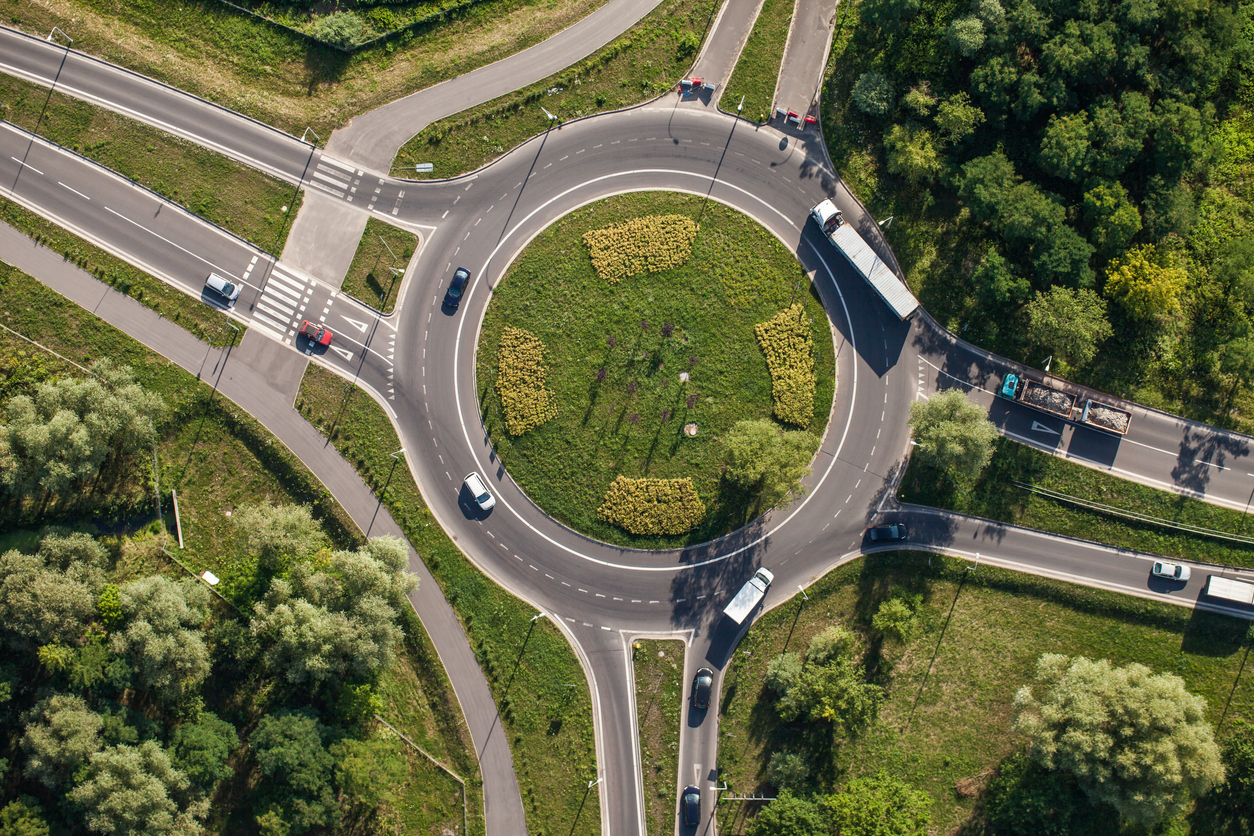Are Roundabouts Safer than Intersections?

Roundabouts seem to be a divisive topic these days. To some, they are a quicker and safer alternative to traditional intersections. To others, they are confusing and unnecessary. So, where does the truth lie?
If you’re looking for an answer to this question, you can learn more in this short guide.
What is a Roundabout?
As the name implies, roundabouts are intersections that are typically circular in shape. Vehicles that enter these intersections must yield to vehicles that are already in the circular flow of traffic.
Roundabouts are designed to force drivers to approach and move through the intersection at slow speeds. Ideally, this makes the area safe for vehicle occupants and pedestrians.
Many national foundations support this belief. Specifically, the Federal Highway Administration supports roundabouts as a proven safety countermeasure that reduces crashes and serious injuries.
Why Are Roundabouts Considered to Be Safer?
So what exactly is safer about these types of intersections?
One of the best features of a roundabout is its yield control. Essentially, this means that drivers do not have to enter the intersection until they feel safe to do so. It also allows for:
- Increased visibility for drivers and pedestrians
- Fewer fender-benders and rear-end collisions
- Fewer points of impact
- No possibility of head-on collisions
- No possibility of running a red light
- Fewer possibilities of a serious accident
- Slower speeds all around
Unfortunately, traditional intersections have proven to be very dangerous. In fact, they account for a large percentage of accidents, injuries, and deaths on U.S. roads.
According to the Federal Highway Administration, roundabouts create a 44% reduction in all crashes and a 72% reduction in crashes that result in serious injury or death.
How Can You Use a Roundabout Safely?
While roundabouts are generally considered to be safer than intersections, they can be dangerous for drivers who are confused or unsure about how to use them properly.
Here are some tips for using a roundabout safely:
- Yield to all traffic coming from your left (traffic moves in a counter-clock direction)
- Yield to oncoming traffic from both lanes, not just the one that is closest to you
- Check signage and markings to determine which lane is best for you
- Travel at or below the posted speed limit
- Yield to any and all pedestrians or bike riders
- Never attempt to pass another vehicle within the roundabout
If you are in doubt about the best course of action within a roundabout setting, take it slow. There is very little risk of collision for drivers who move slowly and with caution. Be aware of signs in the near vicinity, as well, as they will help to direct you.
The best thing about the round shape of a roundabout is that you can take another lap if you miss your exit. Rather than trying to cross lanes at high speed, slow down and make an attempt again on your next rotation.
Factors that Make Driving on a Roundabout More Dangerous
Of course, roundabouts can be dangerous for drivers who fail to follow general safety protocols. For example, a distracted driver can easily become involved in a rear-end collision or fender-bender in a roundabout.
Other risk factors include:
- Heavy traffic
- Aggressive driving
- Inclimate weather
- Poor road conditions
Do you have questions about road safety in your city?, Contact us and we’ll get back to you.
